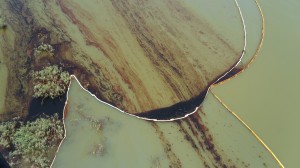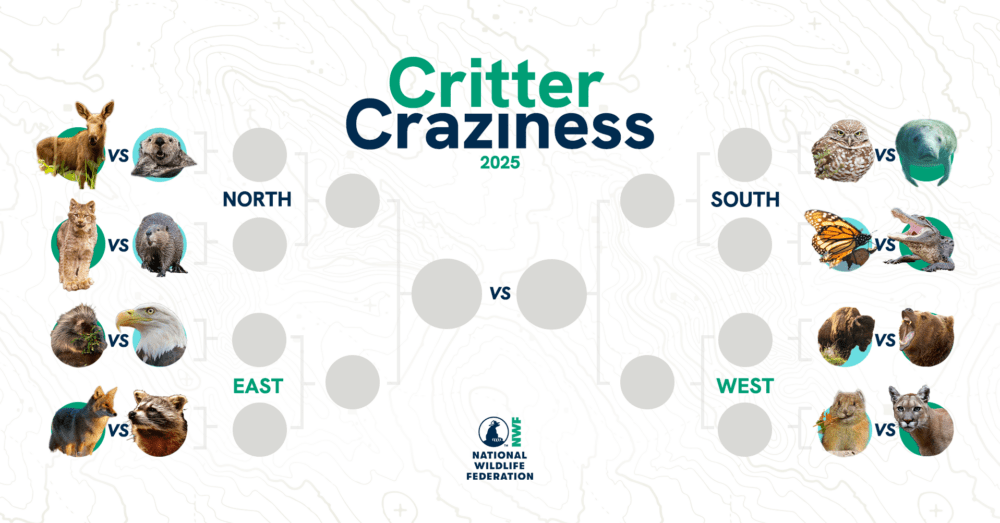We have much more to do and your continued support is needed now more than ever.
Are Louisiana Fish Kills Related to Gulf Oil Disaster?

A number of large fish kills in Louisiana have left many wondering whether they were a result of the Gulf oil disaster. Thousands of dead Menhaden in canals and large bull redfish washing up on beaches have locals pointing fingers at BP. But authorities at both NOAA and the Louisiana Department of Wildlife & Fisheries have yet to document that any fish have been killed as a direct result of the oil.
Some locals in Louisiana are claiming there have been an abnormally high number of dead fish in local waterways since the start of the Gulf oil disaster. In late-May, New Orleans photographer Jerry Moran ventured down to the small fishing community of Grand Isle, La., after he heard reports of a large fish kill. Following the “stench of death” Moran eventually wandered over a small levee and into a patch of grass where he found “mounds of dead fish.” The discovery included dozens of large bull redfish and a decapitated dolphin.
“There were more flies than I had seen in my life. I think some of the [clean up contractors] were just throwing and piling them up back there,” said Moran.
Moran found more dead fish when he returned to the scene in late-October. What he found may be part of larger fish kills that could be happening in areas that are out of the public eye. Moran documented all of his findings with photos and videos at his Web site.
A number of large fish kills have been reported since August. This included a large kill on August 22 in St. Bernard Parish at the mouth of the Mississippi River-Gulf Outlet. In that kill, there were between 5,000 and 15,000 dead fish which included pogies, drum, speckled trout and redfish. At least three other large fish kills were reported in waterways in Plaquemines Parish and in September and in Long Beach and Cat Island, Miss., in August.
[youtube]http://www.youtube.com/watch?v=9HDgCPkZ65I[/youtube]
Fish kills are not uncommon in the waterways of Louisiana and some parts of the Gulf Coast. Randy Pausino, assistant secretary for the Louisiana Department of Wildlife and Fisheries, said they are typically caused by hypoxic (oxygen depleted) water and Louisiana is rife with these so called “dead zones” where low oxygen levels can cause widespread death. An especially hot summer, combined with high river levels and a surge of freshwater into the marshes through diversions could partially explain what may seem like more fish kills than normal this year.
“We consequently had a huge hypoxic zone this year. Enough wind can pull that closer to shore and anything that is in there where all the oxygen is sucked up, is going to die and come to the surface,” said Pausino.
With millions of gallons of oil & dispersants entering the Gulf during the summer, many question whether they could have played a role in the kills. P.J. Hahn, director of Coastal Zone Management for Plaquemines Parish, said the recent kills were a little uncharacteristic from what normally occurs. Hahn said that while they are not uncommon, they are usually limited to Menhaden (more commonly known as “pogies”) which often die in hot water and enclosed bays. This summer however, Hahn said they found other fish in the kills including trout, redfish, alligator gar and catfish.
“Pogies I can understand, but those other fish I found it odd that they ended up dead. It was a variety of fish and there were a number of things that looked suspicious. What was not normal was the size and frequency of the kills,” said Hahn.
Hahn said that the kills in Plaquemines all happened within eight days of each other. While he doesn’t necessarily attribute the kills to the Gulf oil disaster, he questions the reason and calls for more testing.
Pausino said there is a rigid protocol for responding to fish kills. Agents respond by taking water samples and measuring parameters like water depth and temperature. If it is clear that there is any oil, gas or toxic substances in the water, it is immediately reported to the Department of Environmental Quality. He said that one of the biggest problems in responding to the recent fish kills is that the dead fish can deteriorate rapidly in the warm waters, making it difficult to get fresh samples.
“I can not tell you that oil had absolutely nothing to do with the kills but we have not been able to document it. We could never get a fresh enough sample. In some cases, people would call the press long before they’d call us,” said Pausino.
Monica Allen, a spokesperson for NOAA, also confirmed that the organization has not documented any fish in federal waters that have died as a direct result of the oil.
Michael Murray, a toxicology expert and staff scientist with the National Wildlife Federation, says that hypoxia has been a huge issue in the area for years. Murray said that if fish died in the area as a direct result of oil, there would likely be residual signs of oil in the fish tissue. He also said that the hypoxia could be exacerbated by oil in the area but testing that theory could be difficult.
“As the microbes decompose the oil, the oil levels themselves will go down but also oxygen levels as well through that process. It seems like you would find some evidence of the oil as well if the two were tied together,” said Murray.
Learn more about the National Wildlife Federation’s response to the Gulf oil disaster at NWF.org/OilSpill





















